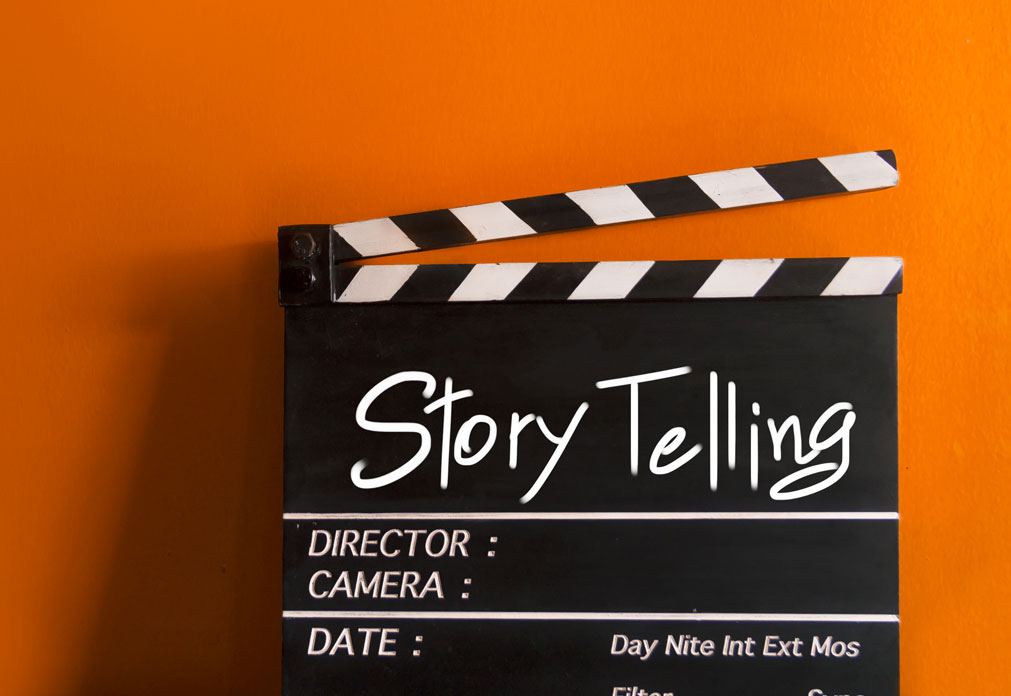The Power of Storytelling to Build a Coalition of Minds, Hearts and Hands

Shaping culture, catalyzing change and building coalitions of the willing share one thing in common – they are the outcomes of successful storytelling. A leader’s ability to organize details that create an emotional arc and result in visible progress and change in the receiver(s) is the most under-rated tool in a leader’s toolbox.
If culture guides employees to know what to do when the leader isn’t in the room; if change requires the ability to enlist individual commitment by painting the vision of a better tomorrow; and if unlocking the power of a team is successfully convincing individuals to prioritize “we” before “me,” then developing one’s ability to become an effective storyteller should be a top personal development priority for every leader.
Shawn Callahan, the author of “Putting Stories to Work: Mastering Business Storytelling” defines a story as a fact wrapped in context and designed to create emotion. He goes on to describe a continuum of storytelling, ranging from big “S” storytelling which has 24 steps – often found in movies and books and involving legends, fairy tales, epics and a hero’s journey; to small “s” storytelling which is grounded in anecdotes, examples and recounts usually more applicable for daily life situations.
Callahan goes on to define three critical capabilities necessary to be an effective storyteller:
- Story-listening: monitoring moments when an experience causes you to have chills (a quote, movie, song or personal experience) which you consciously inventory for future use. For example, I record these moments in the Notes app of my iPhone with a reference to the emotion it created in me for future use.
- Story-triggering: when the example of actions or words causes others to tell stories about that critical moment. These are the moments when legends are created – going above and beyond for a customer or a community, taking a stand on values-based issues in the face of adversity, overcoming insurmountable odds, or showing authenticity and vulnerability that evokes humanity are just a few examples.
- Story-telling: developing the skill to effectively tell the right story and the right time.
With this context, I’ll focus the remainder of this article on this third aspect of story-telling, incorporating the best practices I have found helpful for developing a compelling story that makes sense (head), connects emotionally (heart) and inspires commitment and shared ownership in the desired outcome (hands).
- Organize your story into three “acts”: The mind is wired to think in three’s, and science has proven the power of three increases retention of subject matter significantly. Is it a coincidence that great theater tends to have three acts? Or that the anatomy of a hit song typically repeats the chorus three times and includes a trimodal tempo (verse, chorus and bridge)? Or that successful advertising follows an arc of problem (have a headache), solution (take an aspirin), and payoff (get relief fast). Or that public speaking courses teach the best practice of “tell that what you’re going to tell them, tell them, then tell them what you told them?” It is no coincidence, it is science. Organize your story into three acts.
- Before a major moment, choose the emotion you hope to create: great storytelling requires going beyond facts to evoking emotion, winning the head and the heart. As a speaker, reflect on the emotion you seek to create in your audience and review your inventory of “story-listening” moments to find one that evoked that particular emotion in you when you experienced it. Then embed that quote, video or song into your story to create the emotion you seek while advancing your point.
Over the years, I have channeled countless moments in history, movie scenes or motivational songs to emphasize a point and create an emotion. When facing seemingly insurmountable odds, the story of “The 300” Spartans at the Battle of Thermopylae has instilled courage and resolve. To showcase the power of teamwork, I’ve called upon the “Miracle on Ice” as the 1980 US Men’s Olympic Hockey Team shocked the world, or “We Are Marshall” as the Young Thundering Herd inspired a community and a university to rise from the ashes of a tragic plane crash to seize glory. I’ve invoked the “Tao of Pooh”, the wisdom of “Mr. Roger’s Neighborhood” and the lessons of “Forrest Gump” more times that I can count. In each instance, it’s never the story that wins the day, it is the team’s commitment and execution. However, the story remains embedded in the memories of those who lived that moment, and is recounted for future generations as well. - Practice, practice, practice: begin to embed storytelling into the regular mix of your communication methods. Over time, you’ll develop an instinctive rhythm of when and how to embed stories into the moments you hope to accentuate to achieve a desired action. A best practice of those who have perfected the art of storytelling is to become so routine that the forthcoming story becomes both predictable and desired. A wonderful example of this was Steve Job’s famous … “and one more thing.”
The art of storytelling, especially in a virtual world, has never been more important. It is a capability to be developed, not an elusive gift that some are blessed with having since birth. Leaders can become more proficient by developing their story into three acts, incorporating stories, videos or music to emphasize the message and evoke the emotion you hope to create, ultimately creating the action or outcome you seek to produce. We all possess the ability of becoming great storytellers, with a little practice.